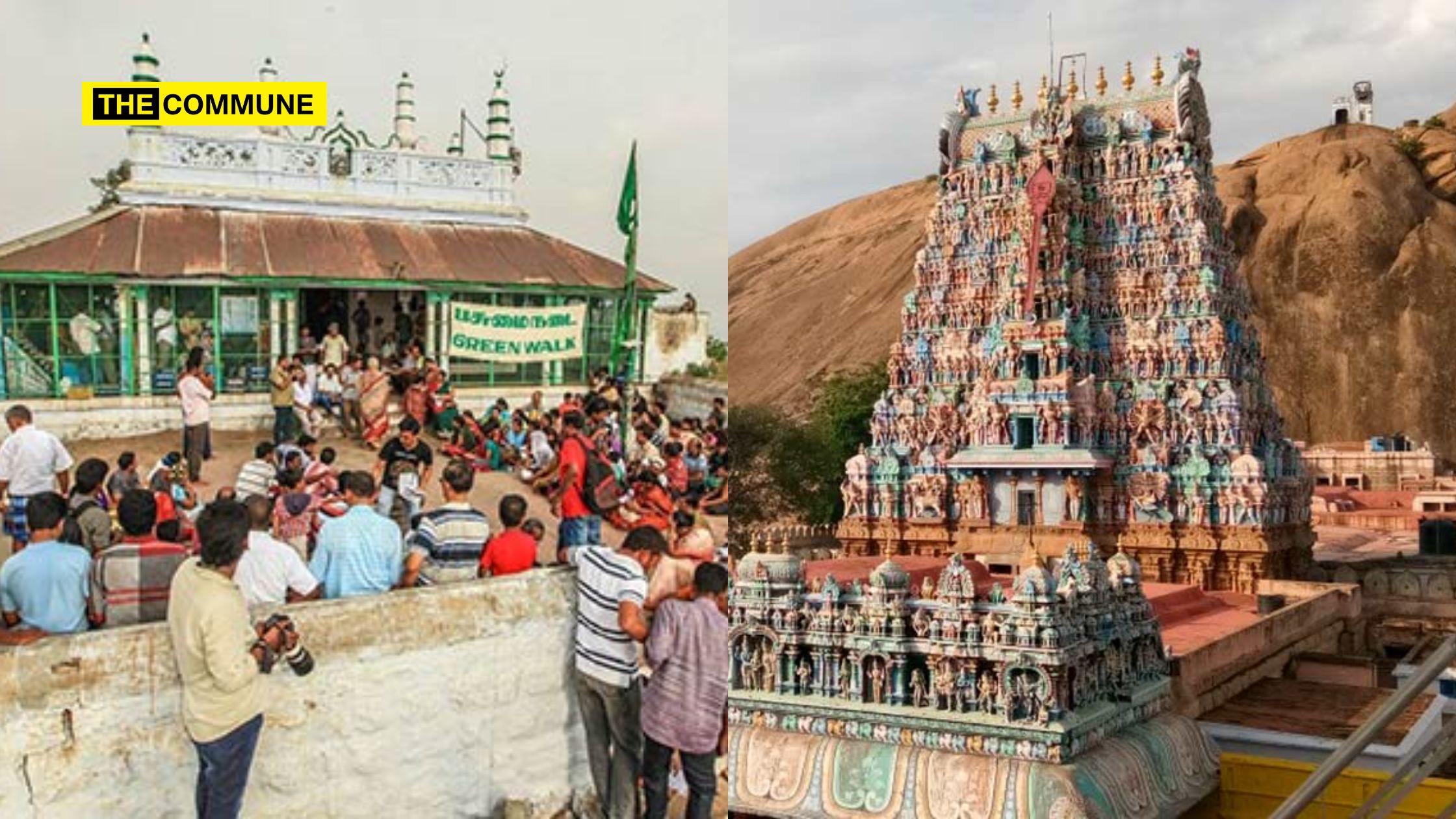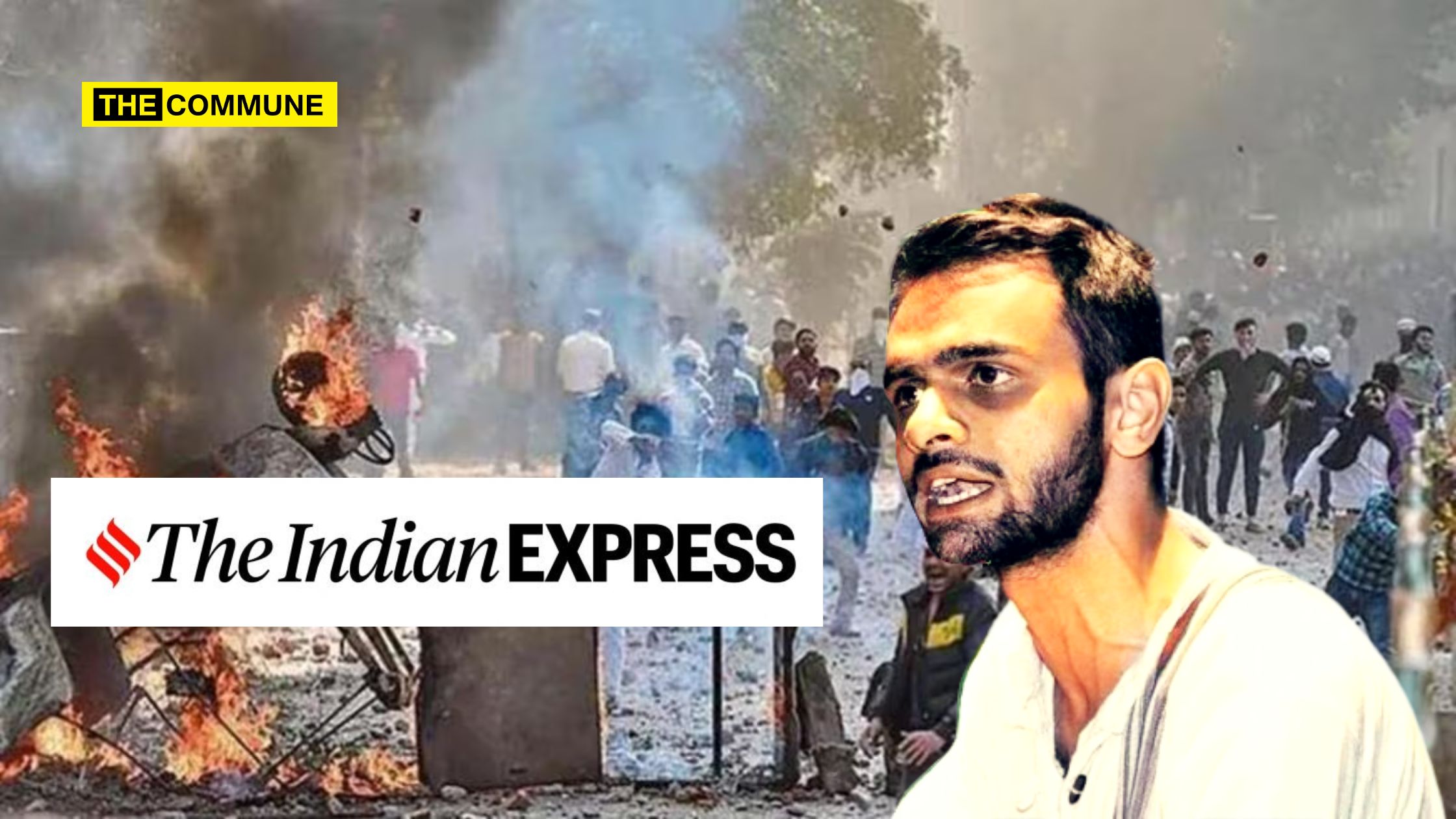
The Indian Express article titled “When Umar Khalid came home” exemplifies a troubling trend in journalism where individuals facing serious charges of violence and sedition are portrayed in an overly sympathetic light. By romanticizing the personal details of Umar Khalid’s life during his interim bail period, the article shifts focus away from the grave allegations against him, which include conspiracy in the 2020 Delhi riots that led to 53 deaths and left over 200 injured.
Problematic Quotes From The Article
Let’s take a look at some of the problematic quotes in the Indian Express article.
“How can staying in a cage for four years be easy for someone who loves being out in the public all the time?”
The use of the term “cage” paints Khalid as a victim rather than someone facing trial for orchestrating violence. It subtly undermines the gravity of the charges under the Unlawful Activities (Prevention) Act (UAPA).
“He was savouring every ray of sunlight. It was as if he had returned to the city from a cave in a jungle.”
This poetic depiction trivializes the accusations of being part of a “larger conspiracy” that led to communal violence and death.
“She cooked non-vegetarian food for him every day… he’s very fond of mutton. His friends got burgers, pizzas, and cakes for him. He also likes cold drinks a lot.”
This focus on food and personal preferences risks trivializing the allegations and making Khalid appear relatable or sympathetic.
“There is a conception among others in jail that my son is a terrorist. It is not easy to convince them otherwise…”
This quote frames Khalid as a misunderstood victim, rather than addressing the evidence or allegations against him.
“The people who spent years in jail would have already lost their social identity and real lives by then.”
This sentiment, while valid in discussions on justice reform, glosses over the suffering of riot victims and the legal proceedings that led to Khalid’s incarceration.
Overall, getting such quotes from the family and publishing them in a national daily ensures that the narrative of portraying him as innocent to the public is established.
Let’s take a look at how such humanization and romanticization of terrorists is a common thread that runs across the world of journalism globally.
Romanticizing Terrorists And Those Accused Of Violence & Terror: A Pattern In “Journalism”
This isn’t the first instance where media outlets have softened public perceptions of individuals accused of heinous crimes. Some notable examples include:
Osama bin Laden
The New York Times described Osama Bin Laden as a “rich young millionaire” and focused on him being “a tall and handsome man“. They even published an elaborate obituary humanizing a terrorist.
Omar Sheikh
The Guardian reported terrorist Omar Sheikh being an “eccentric, good-humoured schoolboy” of Forest School and a member of the British arm-wrestling squad.
Abu Bakr al-Baghdadi
Washington Post referred to terrorist and Islamic State leader Abu Bakr al-Baghdadi as “Austere Religious Scholar” in its obituary.
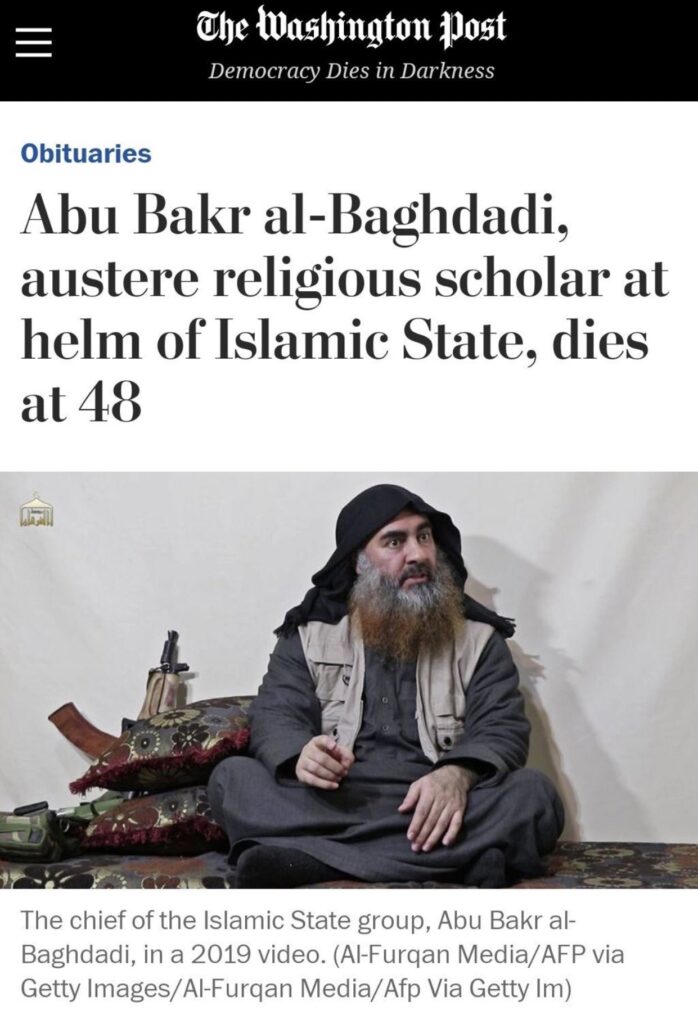
Ajmal Kasab
BBC portrayed 26/11 Mumbai attack terrorist Ajmal Kasab as a village boy by publishing a video report after visiting his village.
During the trial of Ajmal Kasab, the lone surviving terrorist of the 2008 Mumbai attacks, some media outlets focused on his youth and background, with headlines like “Kasab’s Last Wish” which humanized a mass murderer.
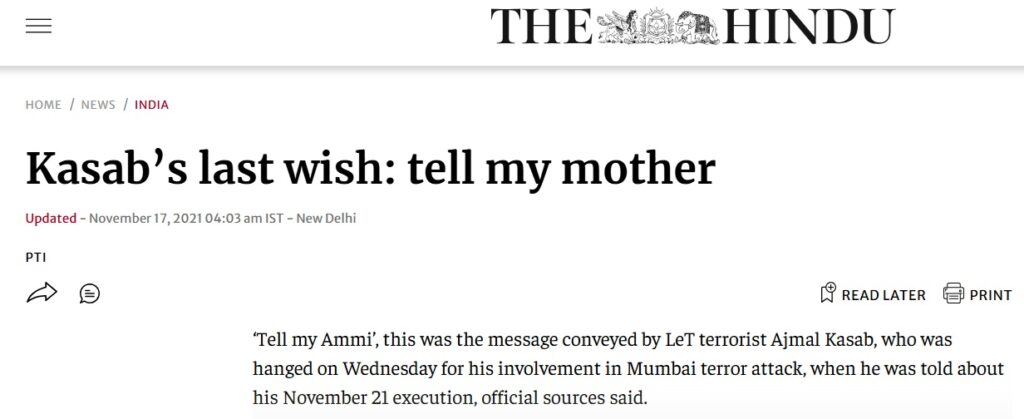
Boston Bomber
Multiple media outlets such as Rolling Stone described the Boston Marathon bomber (2013) as a “handsome young man” and “promising student“.
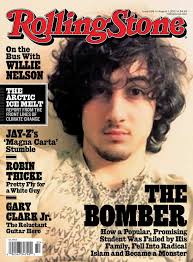
Burhan Wani
After the killing of Burhan Wani, a Hizbul Mujahideen commander, some Indian journalists such as Barkha Dutt and her media outlet NDTV referred to him as a “son of a headmaster” and a “budding cricketer” or sometimes as “top rebel commander” focusing on his background and qualities rather than his role in violence and terrorism.
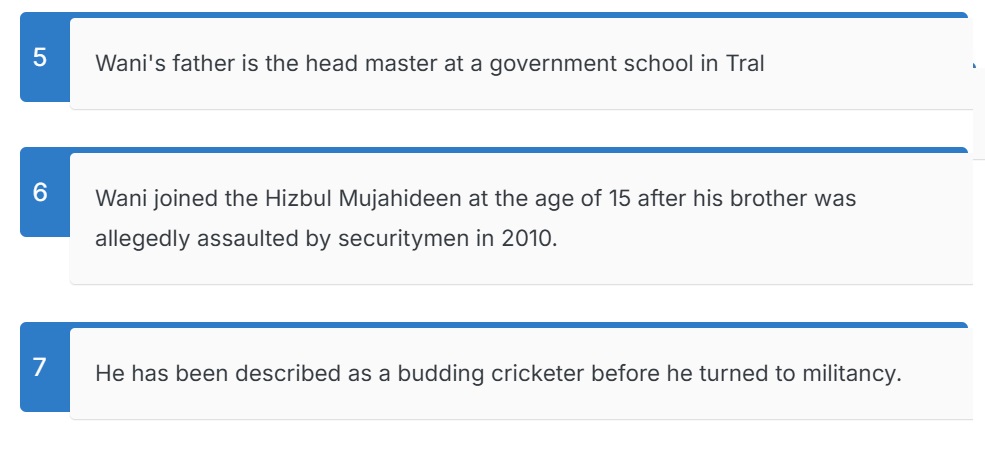
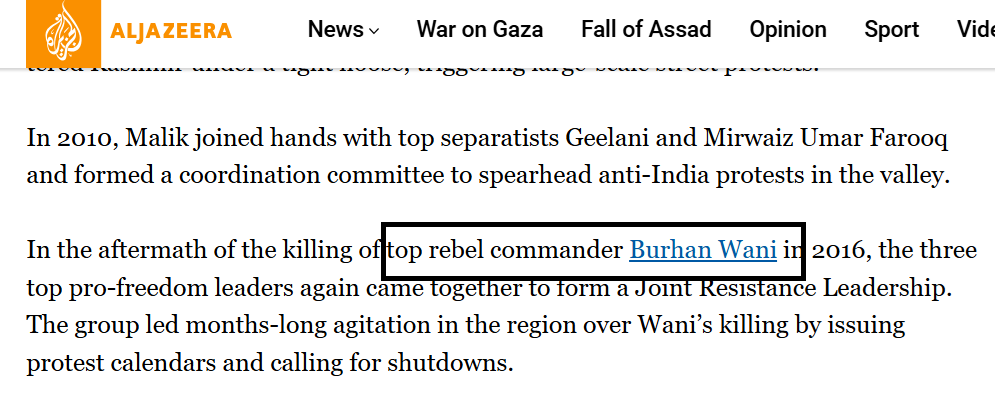
Afzal Guru
Afzal Guru, convicted for his role in the 2001 Parliament attack, was referred to as a “former fruit seller“, sometimes as a “family man” or “victim of systemic injustice” by certain sections of the media, downplaying his involvement in the attack.
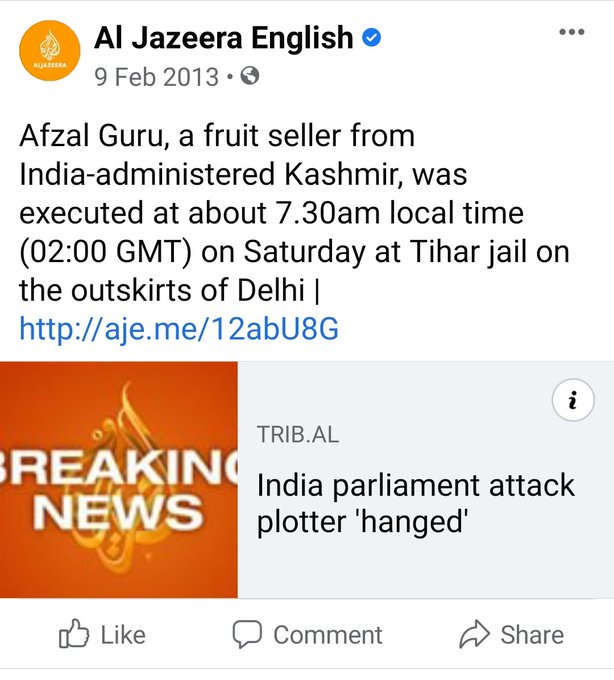
"Afzal Guru was not a terrorist, he was very humanistic, he was loved by jail staff, jail staff cried for him when he walked to the gallows" ~ Kobad Ghandy.
1/2 pic.twitter.com/bt89WmYLY9
— Md Asif Khan (@imMAK02) March 16, 2021
Yasin Malik
Yasin Malik, a terrorist who murdered four Indian Air Force officers in broad daylight at point-blank range, has often been described as a “top rebel leader” by certain media outlets, despite his involvement in violence and terrorism. Al Jazeera even wrote gloriously about how he “gave up arms and became a Gandhian“.
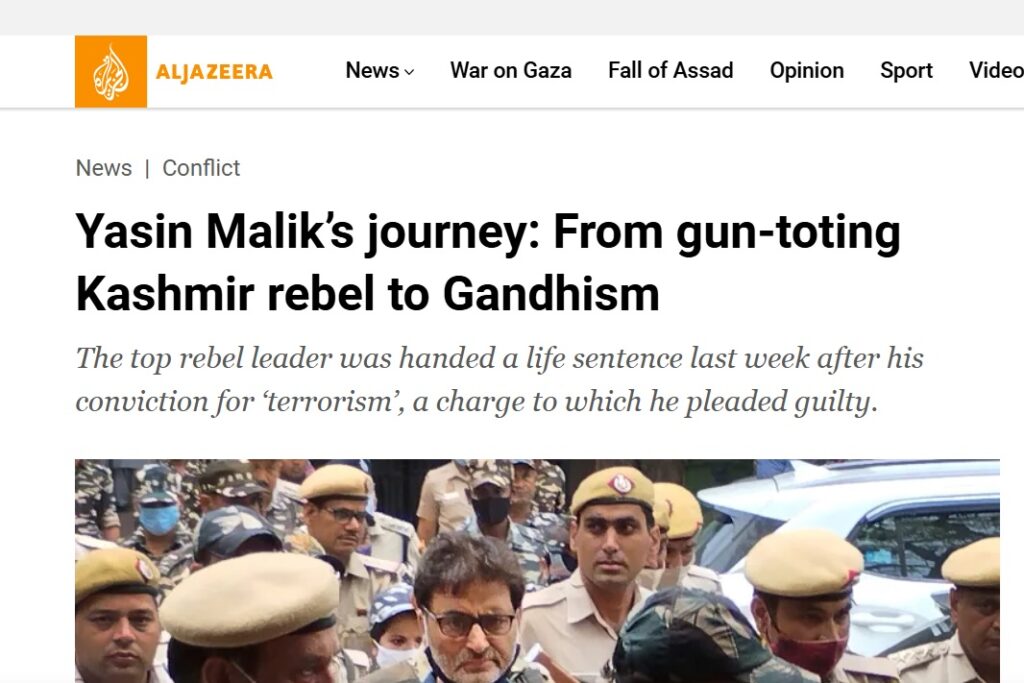
Romanticizing those accused of inciting or perpetrating violence undermines the seriousness of their alleged crimes and risks creating public sympathy for actions that have led to significant harm. In Khalid’s case, the Delhi riots left over 50 dead and hundreds injured, with property destroyed and communities traumatized. Instead of highlighting the suffering of the victims, articles like the one published by The Indian Express shift the narrative to the accused’s personal hardships and detach him from the crime.
Subscribe to our channels on Telegram, WhatsApp, and Instagram and get the best stories of the day delivered to you personally.

